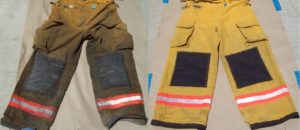Storms, floods, fires and other natural disasters caused an enormous amount of damage in 2017. Beyond the usual house fires and basement flooding, the U.S. suffered from an unprecedented number of weather and climate disasters.
In fact, according to the National Oceanic and Atmosphere Administration (NOAA), the cumulative damage of this historic year hit a record high of $306 billion.
At the same time, property/casualty insurers are under pressure to modernize and put customer needs first to stay competitive. One area worthy of fresh consideration for claims professionals is contents restoration, where innovative technology and a new network of affiliated service providers present an opportunity to improve the customer experience and simultaneously reduce costs for carriers.
Providing the best customer service
The top two contributors to customer satisfaction with the claims experience, according to an Accenture Customer Service Survey, are speed of settlement and transparency of the process, which 95 percent and 94 percent of respondents, respectively, rated as important or extremely important. The quicker you can process a claim and return a policyholder’s life to normal, the happier they will be. Also, the fewer points of contact necessary to close on settlement, the better for all parties involved.
The trauma of finding precious possessions ruined by smoke or water damage is severe for customers. Claims investigators try to salvage whatever they can, but soft contents, from favorite sweaters to pricey luggage, rugs as well as hard contents like leather sofas, furniture and electronics, are all too often written off and disposed of at your nearest landfill.
What if those contents could be saved? Thanks to emerging technologies and a supportive national network of restoration providers, it’s now possible to restore goods that were previously considered unsalvageable.
Problem with traditional contents restoration
For many years insurance restoration of contents has suffered from several limitations. Removing heavy smoke and soot or gray and black water contamination has been virtually impossible, it takes a long time to remove smoke odor, and most cleaning methods are labor intensive and require the use of harsh chemicals. This has led to the cashing out of a higher-than-necessary percentage of goods.
Claims adjusters have typically had to engage multiple third-party restoration services and coordinate them with the customer, which has a negative impact on both the speed of processing and transparency for the policyholder. It’s not enough to say contents look and smell clean, there’s also a need to verify microscopic decontamination, particularly with clothing or children’s soft toys.
There is a better way.
Innovation arrives to contents restoration
The latest ultrasonic cleaning systems use high frequency sound to vibrate water molecules. In short, they ‘clean by bubbles’ through a process called cavitation, or gas bubble implosions in liquid. An example being the moving blades of a boat propeller. Essentially, the sound waves create cavitation bubbles that multiply quickly and eventually implode due to the return of high pressure, producing a cleaning effect. (The same mechanics are applied to pulverize kidney stones.) These ultrasonic baths are used to clean hard contents such as sensitive consumer electronics, computers or stereo equipment, removing contaminants without having to use harsh chemicals.
Other new technologies include computer-controlled, automated wash systems that employ hydraulic, rather than mechanical cleaning action, covering specific protocols for various scenarios, from sewage contamination to smoke odor. With something like the Esporta, it’s possible to clean category 2 and 3 water-damaged soft contents using biodegradable cleaning agents. Third-party laboratory testing conducted by Wonder Makers Environmental revealed that today’s machines can remove up to 99 percent of organic contaminants, restoring soft contents to pre-loss condition.
These tech trends have given rise to the Esporta Certified Operators of North America (ECONA), which the group claims can restore 85 percent of soft contents (textiles) considered non-restorable by traditional dry cleaning.

There are also several innovative inventory software packages out there, designed to simplify the cataloguing, pack out and pack back procedure. Options like ContentsTrack and iCat allow insureds to keep close tabs on their contents as they go through the restoration process.
Standing out in a crowded marketplace
Companies that offer consistently best-in-class customer experience tend to grow faster and more profitably, according to McKinsey & Company. Customer-centricity is about going the extra mile for policyholders, taking the time to understand what they really want, and then delivering it. Customers want their original designer leather heels and handbags; they want their favorite suits and gowns; and they want beloved soft toys and heirlooms back in the family.
Yet another opportunity where claims pros come out looking like heroes.
Writing off contents and paying out for replacement items doesn’t factor in the sentimental attachments people form. Claims professionals know their job is to restore normalcy for policyholders as quickly and painlessly as possible, and contents restoration is a great way to do that. It can help build real customer loyalty in an industry where that’s hard to come by.
It’s less costly for insurers to restore contents than to replace them. Automated systems leave no room for human error, produce consistent results with consistent costs and enable a speedier settlement. Factor in the environmental benefits of saving contents from landfills and avoiding the use of hazardous agents, and you can see why improved full contents
restoration is the right move.
Charlie Horn is President of Paul Davis Restoration in Louisville, Kentucky, (www.louisville.pauldavis.com) offering fire, mold, storm and water damage repair services since 1980. Charlie is also a Premium Member of the ECONA Network delivering full contents restoration services. Horn can be contacted at CHorn@pdrky.com.

